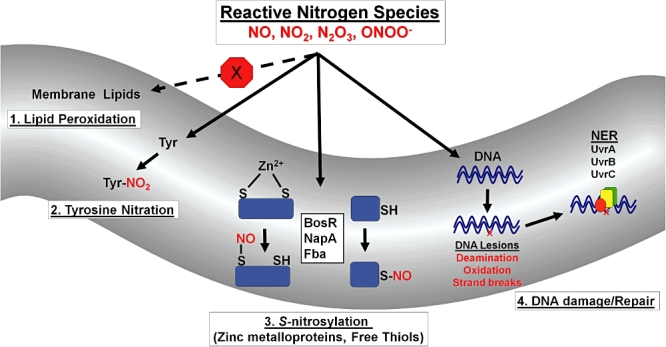Fig. 8.

Proposed molecular targets of RNS in B. burgdorferi. Throughout its infectious cycle B. burgdorferi encounters RNS capable of modifying or damaging diverse biomolecules. 1. Unlike ROS, RNS do not trigger lipid peroxidation of polyunsaturated fatty acids in the B. burgdorferi cell membrane. 2. Tyrosine residues of B. burgdorferi proteins are susceptible to nitration by ONOO-, but not by the RNS produced by DEA/NO. 3. Free and zinc-bound cysteine thiols are primary targets of RNS in B. burgdorferi. This study has identified BosR, NapA and the BB0445-encoded fructose-1,6-bisphosphate aldolase (Fba) as specific targets of RNS. 4. B. burgdorferi DNA damaged by RNS is efficiently repaired by DNA repair systems including the nucleotide excision repair (NER) pathway (UvrA, UvrB and UvrC).
